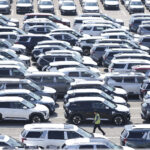In the past five years, the annual insured losses from natural catastrophes averaged $106 billion, up from $83 billion in the preceeding five-year period, new data from Verisk shows.
And with a noticible uptick in extreme weather in recent times, the insurance industry should brace itself: Verisk’s estimates the global modeled insured average annual loss (AAL) from natural catastrophes at $151 billion.
The rising losses are fueled by rapid urban expansion and climate change, according to the authors of the 2024 Global Modeled Catastrophe Losses Report from Verisk’s Extreme Event Solutions business. Rising property exposure in hazardous areas is a contributing factor to increasing insured losses, and climate change accounts for roughly 1% of the annual increase in losses with exposure growth and inflation being the main contributor.
Across the globe, nearly 58% of cities with a population of at least 300,000 are highly exposed to one or more natural hazards.
“Changing exposure patterns and rising repair costs make it critically important for insurers to regularly reassess their exposures, particularly in times of increased inflation and in the urban and coastal areas that are most vulnerable to natural hazards,” the report states.
Global modeled losses with a 100-year return period show an increase nearly every year since this report was first issued in 2012, and climate change is widely expected to increase the frequency and intensity of catastrophic weather events, the report shows.
Verisk’s suggest the AAL will increase at least 1% year-over-year for each of peril outlined in the report due to climate change.
While the largest single event is anticipated to be produced by a hurricane or an earthquake, severe convective storms, extratropical storms, wildfires and floods are a significant part of the risk. These perils account for a little more than half of the $119 billion modeled (non-crop) AAL, according to the report.
The insured portion of economic loss from natural disasters varies largely by region, the report shows.
“In North America, for example, about 51% of the economic loss from natural disasters is insured, while in Asia and Latin America, insured losses account for only about 12% and 24% of economic losses, respectively, reflecting the very low insurance penetration in these regions. The portion of economic losses that are insured also varies significantly by peril,” the report states.
Was this article valuable?
Here are more articles you may enjoy.

 As Trump Considers Auto Tariffs Pause, Parts Exemptions Could Be Key for US Industry
As Trump Considers Auto Tariffs Pause, Parts Exemptions Could Be Key for US Industry  Report: Insurers Pay $1.6B in Dog Bite Claims, as Frequency Soars
Report: Insurers Pay $1.6B in Dog Bite Claims, as Frequency Soars  Average U.S. Vehicle Age Approaching 13 Years, New Report Shows
Average U.S. Vehicle Age Approaching 13 Years, New Report Shows  Survey Shows Distracted Drivers Overconfident: 20% Text While Driving, 15% Use Social Media
Survey Shows Distracted Drivers Overconfident: 20% Text While Driving, 15% Use Social Media 